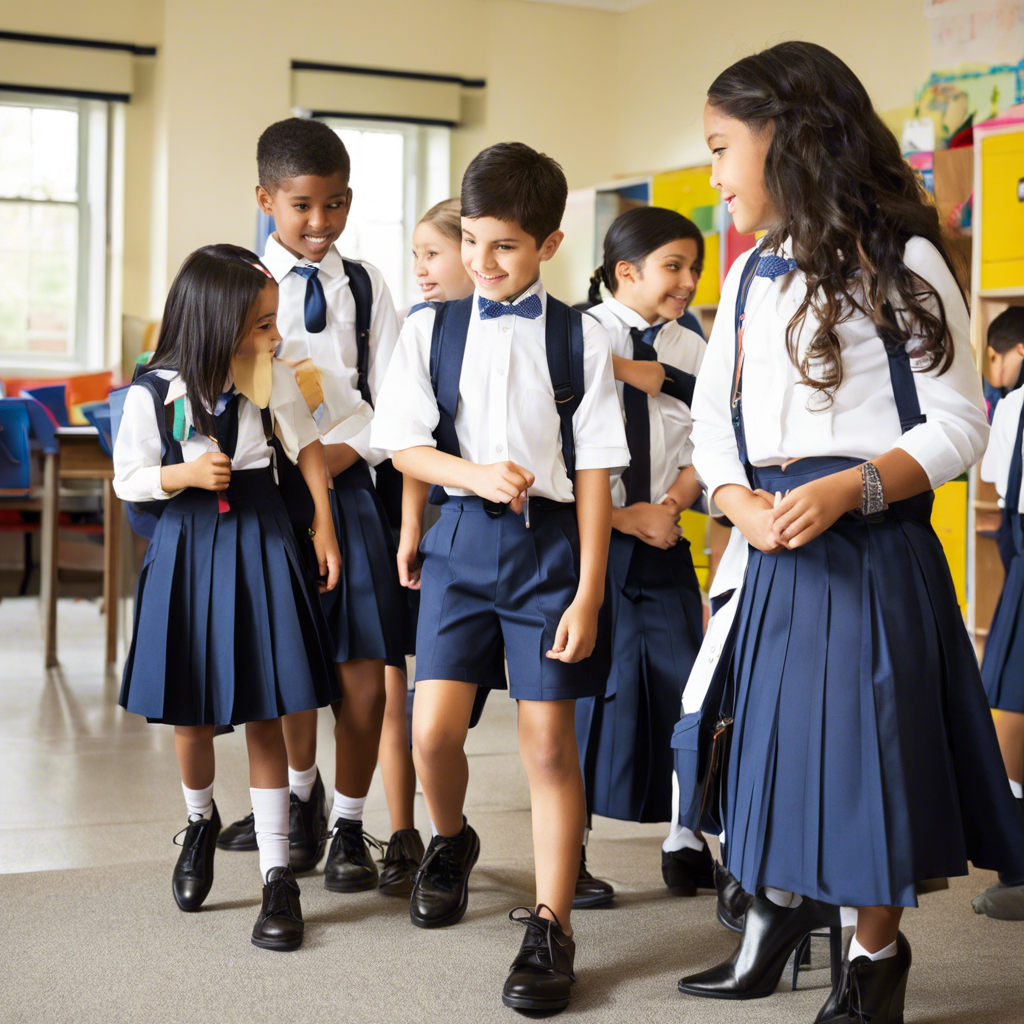School uniforms’ effect on student discipline, academic focus, and overall educational experience is explored, including cultural considerations.
The topic of school uniforms has sparked debates among educators, students, and parents for years, as it delves into the complex relationship between a student’s attire and their behavior, academic performance, and self-expression. This article aims to delve into the multifaceted impact of school uniforms, examining both the potential benefits and drawbacks that this dress code policy can have on students’ overall educational experience.
The Pros and Cons of School Uniforms
Proponents of school uniforms argue that they bring a sense of discipline and unity to the student body, while critics claim they restrict self-expression and may not cater to all cultural backgrounds. This section explores both sides of the debate.
Advantages of School Uniforms
School uniforms are often seen as a means to promote discipline and equality among students. Here are some of the key advantages:
-
-
Improved Focus on Academics
-
By eliminating the distractions of trendy clothing, school uniforms can help students concentrate on their studies. A study by the University of Houston found that schools with uniform policies reported significant improvements in student attendance, behavior, and graduation rates compared to schools without uniforms.
-
-
Reduced Peer Pressure and Bullying
-
Uniforms can minimize the pressure to keep up with fashion trends, reducing bullying based on clothing choices. Research suggests that uniform policies can lead to a more inclusive and respectful school environment, fostering a sense of safety and belonging.
-
-
Cost-Effectiveness
-
While purchasing uniforms may require an initial investment, they can be more cost-effective in the long run. Students can wear the same uniform throughout the week, reducing the need for multiple outfits and potentially easing financial strain on families.
Challenges and Considerations
Despite the benefits, school uniforms also face criticism for various reasons:
-
-
Restriction of Self-Expression
-
Opponents argue that uniforms stifle students’ creativity and individuality. Some students may feel their unique personalities are suppressed, potentially impacting their motivation and engagement in school.
-
-
Cultural Sensitivity
-
Implementing uniform policies requires careful consideration of cultural diversity. Certain uniform requirements may not accommodate the religious or cultural practices of all students. For instance, headscarves or specific hairstyles may be an integral part of a student’s identity, and uniform policies should respect these differences.
-
-
Potential for Inequality
-
While uniforms are intended to promote equality, they may inadvertently highlight socioeconomic differences. Students from lower-income families might find it challenging to afford the required uniforms, potentially leading to feelings of exclusion and embarrassment.
The Influence of School Uniforms on Academic Performance
While the debate surrounding school uniforms continues, it is essential to examine the empirical evidence regarding their impact on academic performance.
Research Findings
Various studies have explored the correlation between school uniforms and student achievement, offering mixed results. Some research suggests that uniforms have a positive influence on academic outcomes, while others find no significant relationship.
Positive Correlation
A study conducted in Maryland found that schools with uniform policies experienced a decrease in disciplinary issues and an increase in attendance rates. This, in turn, led to improved academic performance and higher graduation rates. The researchers attributed these positive outcomes to the enhanced sense of community and discipline fostered by school uniforms.
Mixed Results
Conversely, a meta-analysis that reviewed multiple studies on the topic found inconsistent evidence regarding the impact of school uniforms on academic achievement. While some studies showed positive effects, others reported no significant changes in student performance.
Impact on Student Behavior and School Culture
Beyond academic performance, school uniforms can significantly influence student behavior and the overall school culture.
Promoting Discipline and Unity
Advocates argue that school uniforms encourage a sense of discipline and unity among students. By dressing similarly, students may feel more connected to their peers and the school community. This sense of belonging can foster a positive school culture and reduce incidents of bullying and peer pressure.
Reducing Distractions and Peer Comparison
Uniforms can minimize distractions associated with trendy clothing, allowing students to focus on their studies and extracurricular activities. When students are not concerned about their appearance or competing with their peers’ fashion choices, they can engage more actively in the learning process.
Questions and Answers
Are school uniforms effective in improving academic performance?
Research on this topic is mixed. While some studies suggest positive impacts on attendance and behavior, which can indirectly improve academic outcomes, others find no direct correlation between uniforms and academic performance. It is essential to consider various factors, such as school culture and individual student experiences.
How do school uniforms impact student behavior and school culture?
School uniforms can promote discipline, unity, and a sense of community. They may reduce distractions, peer pressure, and bullying related to clothing choices. However, they might also stifle self-expression and may not accommodate all cultural and religious practices.
What are the main challenges associated with school uniforms?
School uniforms can be expensive, potentially placing a financial burden on families. They may also restrict self-expression and fail to consider cultural diversity. Ensuring that uniform policies are inclusive and do not create unintended social divides is crucial.
Conclusion
The debate surrounding school uniforms is multifaceted, with valid arguments on both sides. While uniforms can foster discipline and unity, they may also restrict self-expression and fail to accommodate diverse cultural backgrounds. Research findings on their impact on academic performance are mixed, suggesting that uniforms may be more effective in certain contexts than others.
Ultimately, the decision to implement school uniforms should consider the unique needs and culture of each school community. It is essential to involve students, parents, and educators in discussions to ensure that any uniform policy respects individuality, promotes a positive learning environment, and addresses concerns related to cost and cultural sensitivity.
External Resources
1. Do School Uniforms Help or Hurt?
2. Student Uniforms: History, Current Policies, and Future Directions
3. School Uniforms and Dress Codes
